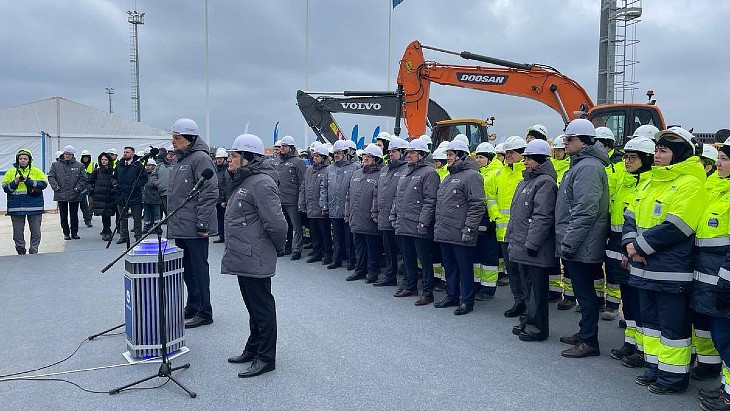
The Leningrad nuclear power plant is one of the largest in Russia, with an installed capacity of 4400 MWe, and provides more than 55% of the electricity demand of St Petersburg and the Leningrad region, or 30% of all the electricity in northwest Russia.
Leningrad 1 shut down in 2018 after 45 years of operation. Leningrad 2, also a 1000 MWe RBMK unit, started up in 1975 and was permanently shut down in November 2020. As the first two of the plant's four RBMK-1000 units shut down, new VVER-1200 units started at the neighbouring Leningrad II plant. The 60-year service life of these fifth and sixth units (also known as Leningrad II-1 and Leningrad II-2) secures power supply until the 2080s. Units 7 and 8 will replace units 3 and 4 as they are shut in the coming years.
The pouring of the first concrete for unit 7 marks the start of the main phase of construction of the new power unit which is expected to generate power for 60 years, with the possibility of a 20-year extension. The foundation slab needs 5500 cubic metres of concrete, with the aim to complete it by the summer, after which the construction of the floors and the inner and outer containment shells of the reactor building can begin. The aim is for unit 7 to enter commercial operation in 2030.
President Vladimir Putin took part via videolink in the ceremony, saying the construction of the new power unit "will be a good contribution" to increasing nuclear's share of Russia's energy balance to 25% by 2045 and would "increase the energy security of the entire northwestern region of Russia and provide consumers with more environmentally friendly, clean electricity for years to come".
Alexander Drozdenko, governor of the Leningrad region, said: "Thanks to the work of the nuclear power plant ... thousands of industrial enterprises and social facilities are operating, houses, bridges, roads are being built, large regional investment projects are being implemented, jobs are appearing, and significant funds for healthcare, education, social support of the population."
Rosatom Director General Alexei Likhachev said: "In addition to the Leningrad NPP, replacement units will also be built at the Smolensk and Kola nuclear power plants." He also said there would be new sites developed and "we will significantly increase nuclear generation in the Urals and expand to Siberia and the Far East, where the largest increase in consumption is predicted".
Rosatom says that the new units at Leningrad will not only replace the retiring capacity but will be able to meet growing demand and help large regional investment projects. The VVER-1200s are capable of load following, in contrast to RBMK units which only operate in baseload mode, which means running only at full power between refuelling and maintenance outages.
According to World Nuclear Association, there are currently 37 operable reactors in Russia. They generate about 20% of the country's electricity - there are four power reactors under construction and 26 more planned and officially proposed.